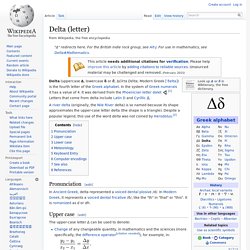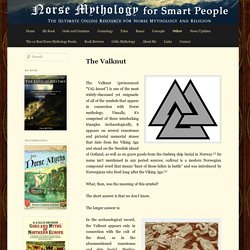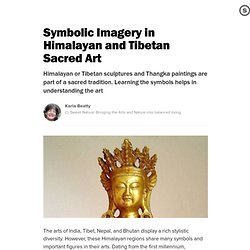

Winged Heart of the Sufi Order. The winged heart is a symbol of the Sufi movement, a mystic branch of Islam.

The symbol is a heart with wings, symbolizing ascension; the five pointed star represents divine light, the moon responsiveness to this light. the symbol was chosen by the founder of the Sufi Order, Hazrat Inayat Khan. Delta (letter) A river delta (originally, the Nile River delta) is so named because its shape approximates the upper-case letter delta (the shape is a triangle).

Despite a popular legend, this use of the word delta was not coined by Herodotus.[2] In Ancient Greek, delta represented a voiced dental plosive /d/. In Modern Greek, it represents a voiced dental fricative /ð/, like the "th" in "that" or "this". It is romanized as d or dh. The upper-case letter Δ can be used to denote: The Laplace operator: The discriminant of a polynomial equation, especially the quadratic equation: The area of a triangle The lower-case letter δ (or 𝛿) can be used to denote: On Microsoft Windows, a small delta can be generated by typing Alt+235.
On OS X, option-j yields an upper-case delta (∆). Cynthia Lanius' Fractals Unit: The Koch Snowflake. LogicKo. Magica. Lexicity. Language in Life. CIE 1931 color space. The CIE 1931 color spaces are the first defined quantitative links between physical pure colors (i.e. wavelengths) in the electromagnetic visible spectrum, and physiological perceived colors in human color vision.

The mathematical relationships that define these color spaces are essential tools for color management. They allow one to translate different physical responses to visible radiation in color inks, illuminated displays, and recording devices such as digital cameras into a universal human color vision response. CIE 1931 RGB color space and CIE 1931 XYZ color space were created by the International Commission on Illumination (CIE) in 1931.[1][2] The CIE XYZ color space was derived from a series of experiments done in the late 1920s by William David Wright[3] and John Guild.[4] Their experimental results were combined into the specification of the CIE RGB color space, from which the CIE XYZ color space was derived. Tristimulus values[edit] Meaning of X, Y, and Z[edit] and where , and.
Spiritual Succor. संस्कृतम् Transcendence. Puzzling. Grok Ko. Mythos. Natura Mythica Deios. Ways Places Means. The 8-pointed Star of the Essenes. Symboldictionary.net. The Valknut - Norse Mythology for Smart People. The Valknut (pronounced “VAL-knoot”) is one of the most widely-discussed yet enigmatic of all of the symbols that appear in connection with Norse mythology.

Visually, it’s comprised of three interlocking triangles. Archaeologically, it appears on several runestones and pictorial memorial stones that date from the Viking Age and stand on the Swedish island of Gotland, as well as on grave goods from the Oseberg ship burial in Norway.[1] Its name isn’t mentioned in any period sources; valknut is a modern Norwegian compound word that means “knot of those fallen in battle” and was introduced by Norwegians who lived long after the Viking Age.[2] What, then, was the meaning of this symbol?
The short answer is that we don’t know. Natura Mythica Deios. Sharing My Love of Symbols. Symbolic Imagery in Himalayan and Tibetan Sacred Art. The arts of India, Tibet, Nepal, and Bhutan display a rich stylistic diversity.

However, these Himalayan regions share many symbols and important figures in their arts. Dating from the first millennium, Himalayan art is part of the Buddhist tradition. It is beyond decorative or fine arts and thus is sacred art. Many of the sculptures and paintings were created as aids for Buddhist meditation. Figures Found in Sculpture and Paintings Most Himalayan art begins with sacred figures. Buddhas—The main image of Buddhas, or “enlightened ones,” possess common features in Himalayan art. Deities or Saints in Tantric Art Religious texts called tantras describe numerous forms of deities. Tantric Deities—Deities, or gods, that personify various enlightened qualities.
Postures Sacred sculpture and paintings show the buddhas and bodhisattvas in a recognizable variety of postures. Lotus position—This posture is commonly associated with meditation. Tibetan Artists Training for Sacred Art Sources: CHRISTIAN SYMBOLS: THE FISH (ICHTHUS, ICTUS), CROSS AND CRUCIFIX. Christian symbols Sponsored link.

The Museum of Idolatry. Talismanic Idols. Astrologikos. Astrologos. Oracula. Futharken. Tarocchi. Esoteric Endeavors. 100th Meme Keys. Magical Thinking. Scientific Representation. Mathematics. Web Semantica. NeWeb Design. Curative Collective. Blab blab hashtag.